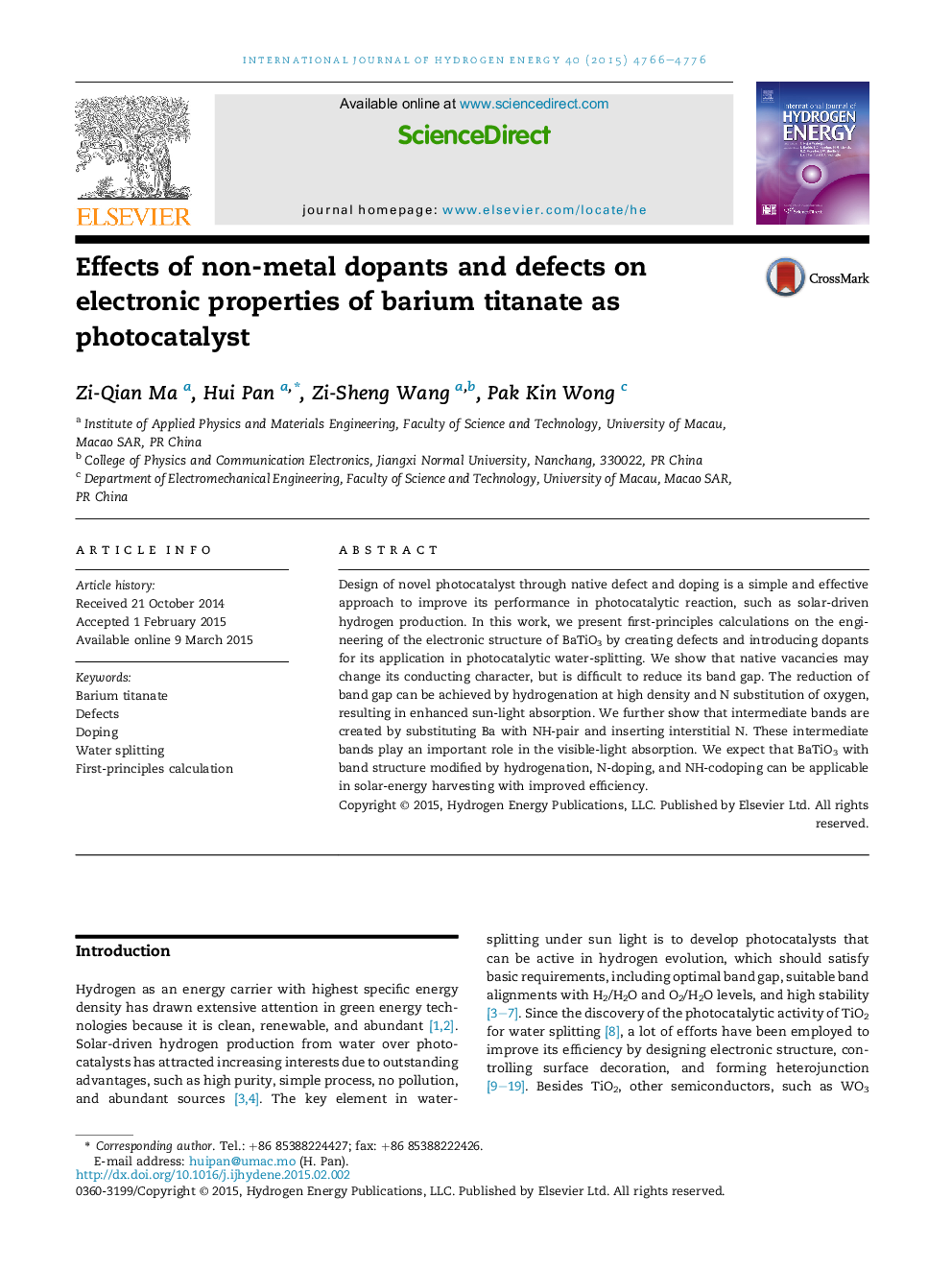| Article ID | Journal | Published Year | Pages | File Type |
|---|---|---|---|---|
| 1271586 | International Journal of Hydrogen Energy | 2015 | 11 Pages |
Abstract
Design of novel photocatalyst through native defect and doping is a simple and effective approach to improve its performance in photocatalytic reaction, such as solar-driven hydrogen production. In this work, we present first-principles calculations on the engineering of the electronic structure of BaTiO3 by creating defects and introducing dopants for its application in photocatalytic water-splitting. We show that native vacancies may change its conducting character, but is difficult to reduce its band gap. The reduction of band gap can be achieved by hydrogenation at high density and N substitution of oxygen, resulting in enhanced sun-light absorption. We further show that intermediate bands are created by substituting Ba with NH-pair and inserting interstitial N. These intermediate bands play an important role in the visible-light absorption. We expect that BaTiO3 with band structure modified by hydrogenation, N-doping, and NH-codoping can be applicable in solar-energy harvesting with improved efficiency.
Related Topics
Physical Sciences and Engineering
Chemistry
Electrochemistry
Authors
Zi-Qian Ma, Hui Pan, Zi-Sheng Wang, Pak Kin Wong,
